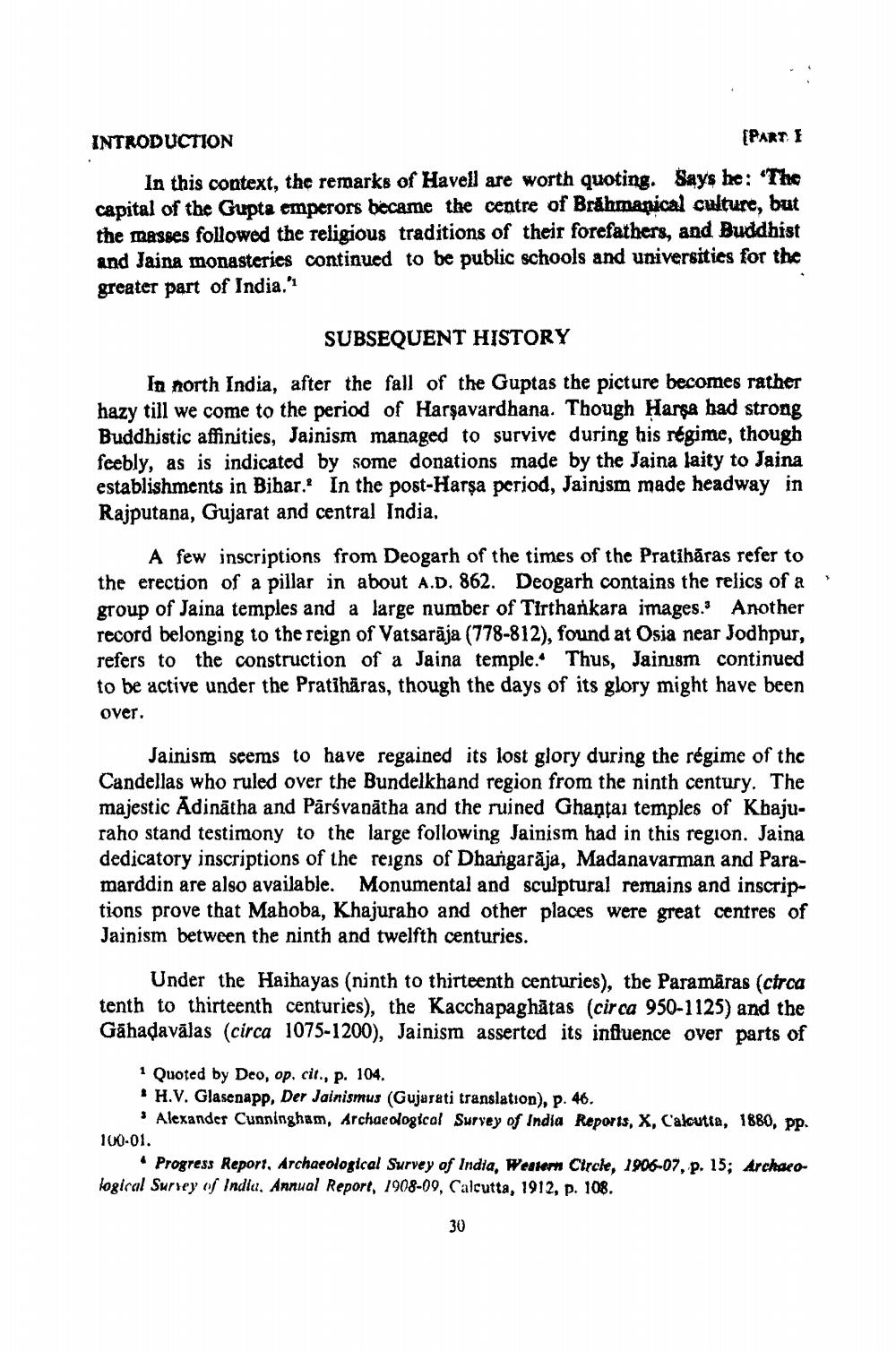________________
INTRODUCTION
(PART 1 In this context, the remarks of Havell are worth quoting. Says he: 'The capital of the Gupta emperors became the centre of Brahmapical culture, but the masses followed the religious traditions of their forefathers, and Buddhist and Jaina monasteries continued to be public schools and universities for the greater part of India.'
SUBSEQUENT HISTORY
In north India, after the fall of the Guptas the picture becomes rather hazy till we come to the period of Harşavardhana. Though Harsa had strong Buddhistic affinities, Jainism managed to survive during his régime, though feebly, as is indicated by some donations made by the Jaina laity to Jaina establishments in Bihar. In the post-Harsa period, Jainism made headway in Rajputana, Gujarat and central India.
A few inscriptions from Deogarh of the times of the Pratihāras refer to the erection of a pillar in about A.D. 862. Deogarh contains the relics of a
of Jaina temples and a large number of Tirthankara images. Another record belonging to the reign of Vatsarāja (778-812), found at Osia near Jodhpur, refers to the construction of a Jaina temple. Thus, Jainism continued to be active under the Pratihäras, though the days of its glory might have been over.
Jainism seems to have regained its lost glory during the régime of the Candellas who ruled over the Bundelkhand region from the ninth century. The majestic Adinātha and Pārsvanātha and the ruined Ghanțai temples of Khajuraho stand testimony to the large following Jainism had in this region. Jaina dedicatory inscriptions of the reigns of Dhangarāja, Madanavarman and Paramarddin are also available. Monumental and sculptural remains and inscriptions prove that Mahoba, Khajuraho and other places were great centres of Jainism between the ninth and twelfth centuries.
Under the Haihayas (ninth to thirteenth centuries), the Paramāras (ctrca tenth to thirteenth centuries), the Kacchapaghātas (circa 950-1125) and the Gāhadavālas (circa 1075-1200), Jainism asserted its influence over parts of
Quoted by Deo, op. cit., p. 104. · H.V. Glasenapp, Der Jainismus (Gujarati translation), p. 46.
Alexander Cunningham, Archaeological Survey of India Reports, X, C'akutia, 1880, pp. 100-01.
Progress Report, Archaeological Survey of India, Western Circle, 1906-07, p. 15; Archaeological Survey of India, Annual Report, 1908-09, Calcutta, 1912, p. 108.
30




